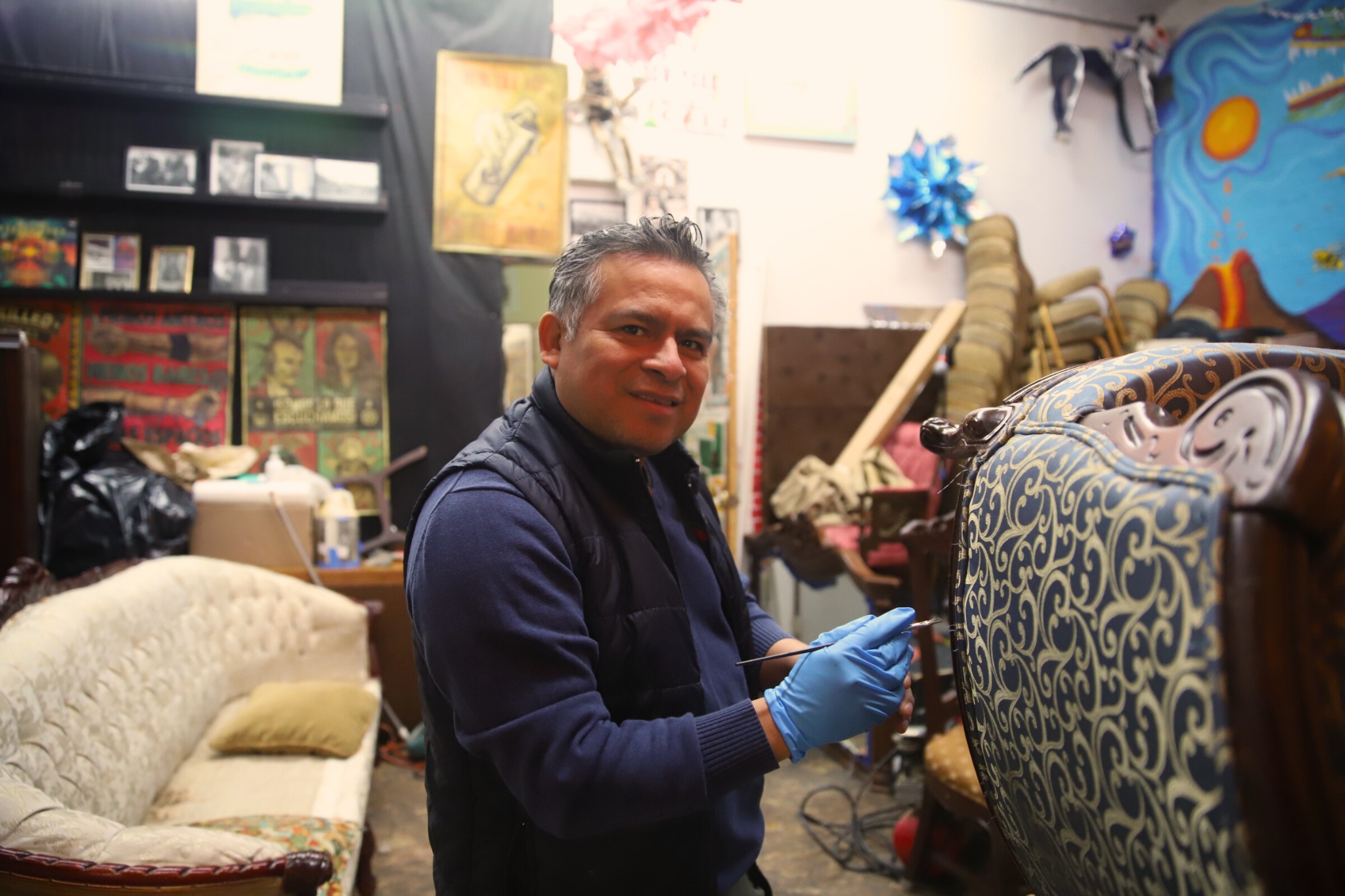Ask Mott Haven business owner Esteban Estevez for his favorite word in Nahuatl, the indigenous language he grew up speaking, and he’ll reply, “Tlazocamati.”
In Mexico, there are roughly 1.5 million people who would understand the Uto-Aztecan word. In the Bronx, he translates it into English: “Thank you.”
Thirty-three years ago, Estevez, 51, left his town of Teopantlán, home to about 4,000 people in the Mexican state of Puebla. He paid $365 to a coyote to help him cross the U.S. border.
He caught a flight to New York, landing at LaGuardia Airport, hailed a cab and arrived in The Bronx, where he would build a successful life over the next three decades.
But all that 17-year-old Estevez knew in 1990 was that he wanted to go home.
“I wanted to get back in the cab. At Boston Road and 170th Street it looked like there had been a bombing,” he said. “The Bronx was full of burned-out buildings, lots of graffiti. From the movies I saw I thought it was all big buildings and lights here. But then I realized that New York is over there, that New York is in Manhattan.”
Estevez is now a fixture in his shop on East 146th Street, which has a sign outside that says “La Casa de Los Pueblos.” His furniture upholstery workroom doubles as a space for La Red de Pueblos Transnacionales, a nonprofit that helps connect indigenous and rural immigrants living in New York.
Estevez, who also calls himself a cultural organizer, has filled his office with antique chairs, and rickety sofas. He works with a tape measure around his neck, never far from his callused hands. Scissors, rolls of fabric of all colors, and scraps of chenille and velvet material are strewn about.
He was introduced to his trade on his first day in the Bronx – and it sustains him and his family to this day, he said.
“I was walking around the neighborhood and saw a man working on a machine in an upholstery shop. His work caught my attention,” he said. “One of them asked if I liked it. I said, ‘Yes.’”
The next day, the worker asked the shop owner if Estevez could learn the ins and outs of upholstering. Before long, he was repairing furniture every afternoon.
It didn’t take long for Estevez to earn the owner’s trust and get the keys to the shop.
“I worked there for four years. When the owner returned to Puerto Rico, they gave me a machine from the place, and with that I set up my first business on Melrose (Avenue) in 1994, with the tool that my former employer gave me,” said Estevez. Since then he has been upholstering and hiring local residents.
The art of repairing, preserving and maintaining the history behind furniture pieces is a rare one in an era of mass-produced furniture and big box stores like IKEA, but Estevez stays busy from morning to night, he said.
“The best thing is when people sit on their furniture and tell me, ‘Thank you Mr. Estevez, there goes the tip for your guys.’”
The loyal clientele he’s built up over the years has helped him stay in business, Estevez said, even as the world has become more accustomed to buying and throwing away, rather than repairing.
“In restaurants everything gets broken. We do work for clinics, dentists, hospital gurneys. I have customers from all over New York,” he said.
That’s not to say Estevez hasn’t had some tough times. In 2004, he employed 18 people. The covid-19 lockdown brought him down to three employees.
“The pandemic really hit small businesses. Many closed. People had no money to fix their furniture,” he said.
His more stable customers were able to hang on, but demand has yet to fully recover, he said.
In the time between upholstery work, Estevez doubles as a community leader in the South Bronx. When he came to New York, he said, his community kept a low profile out of fear of possible deportation if they interacted with police.
A murder in 2002 changed his attitude and that of his community, he said. An 18-year-old Mexican woman from Teopantlán was fatally stabbed in the Queens restaurant where she worked by a man after she rejected his advances, Estevez said.
“It was the first death we had from my community Teopantlán, and because of that we united,” he said.
Estevez has since expanded his community work to include people from Honduras, Guatemala, Argentina or Ecuador. La Red de Pueblos Transnacionales works to keep cultural traditions alive and help immigrants stay connected with their heritage. The group holds a feast every July 25 for the Apostle Santiago, or the Feast of St. James, and they celebrate the Day of the Dead on Nov. 1, among other holidays.
Since 2015, the group has hosted the NewYorkTlan festival, which helps reunite mothers with their migrant children. They also provide workshops for the community on domestic violence and natural medicines.
Estevez’s community work also helps to keep him tied to his own village, which he said he still misses every day. He had a goal of returning to Teopantlán when he turned 50, but the pandemic put that dream on hold, in part because he used most of his savings to get through the lockdown.
Still, he hopes to grow old in his village, surrounded by neighbors and nature, which appeals to him more than aging in a big city.
“I tell my three children that if one day I get sick, I want them to take me there, I don’t want them to burn me or leave me here” he said. “I want to go to where I was born.”

